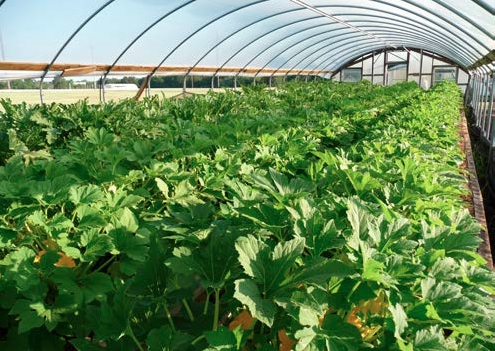
Features
High tunnels provide fresh, local vegetables in northern climates
December 11, 2019 By American Society of Agronomy and Crop Science Society of America
 Squash grown in high tunnels can be provided fresh to local markets well beyond the normal growing season. Credit: Vicki Morrone
Squash grown in high tunnels can be provided fresh to local markets well beyond the normal growing season. Credit: Vicki Morrone Fresh, healthy and tasty vegetables can be impossible to find in colder states during the dead of winter, at least locally. The Dec. 7 Sustainable, Secure Food blog by Vicki Morrone, explores “high tunnels” and how they help farmers extend their growing season.
According to Morrone, high tunnels are “simple structures made from PVC pipes and heavy-duty plastic. They are an economical way that allows farmers to grow food for nine or 10 months of the year. While it’s freezing outside, some very tasty vegetables including spinach, kale and carrots grow inside high tunnels.”
Morrone is an agronomist with Center for Regional Food Systems at Michigan State University.
“The tunnels do not need heaters or lights,” she says. But, watering and fertilization can present some problems. “Farmers often apply manure, compost and chemical fertilizers to provide nitrogen and phosphorus – the most important nutrients needed for plants to grow. Adding fertilizer or manure not only feeds the plants, but also adds salt to the soil. These salts from fertilizer take various forms, like calcium phosphate. This salinity is an unfortunate side effect of fertilization that needs to be managed.”
To learn more about how farmers manage salinity in high tunnels, read her blog here.
Print this page